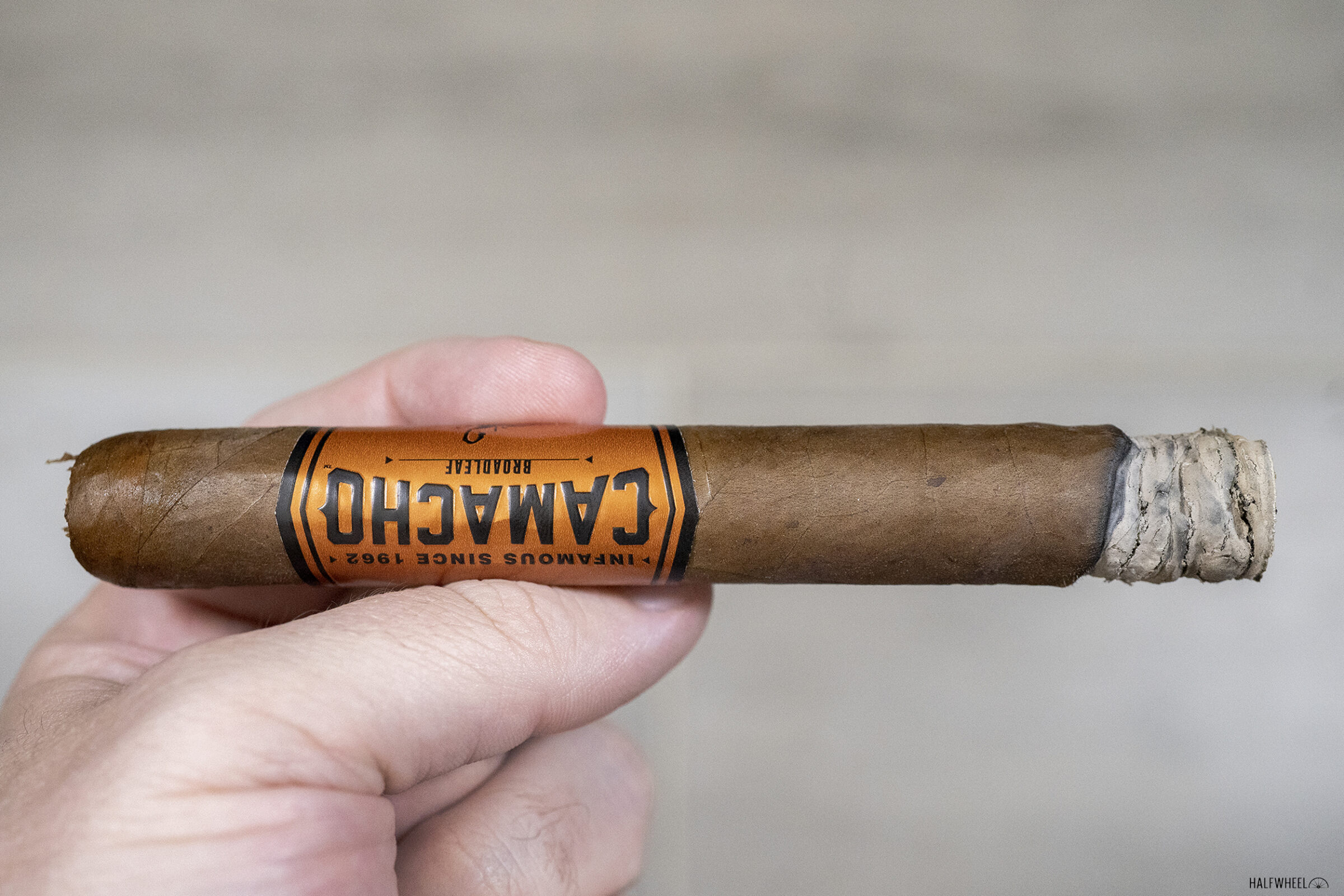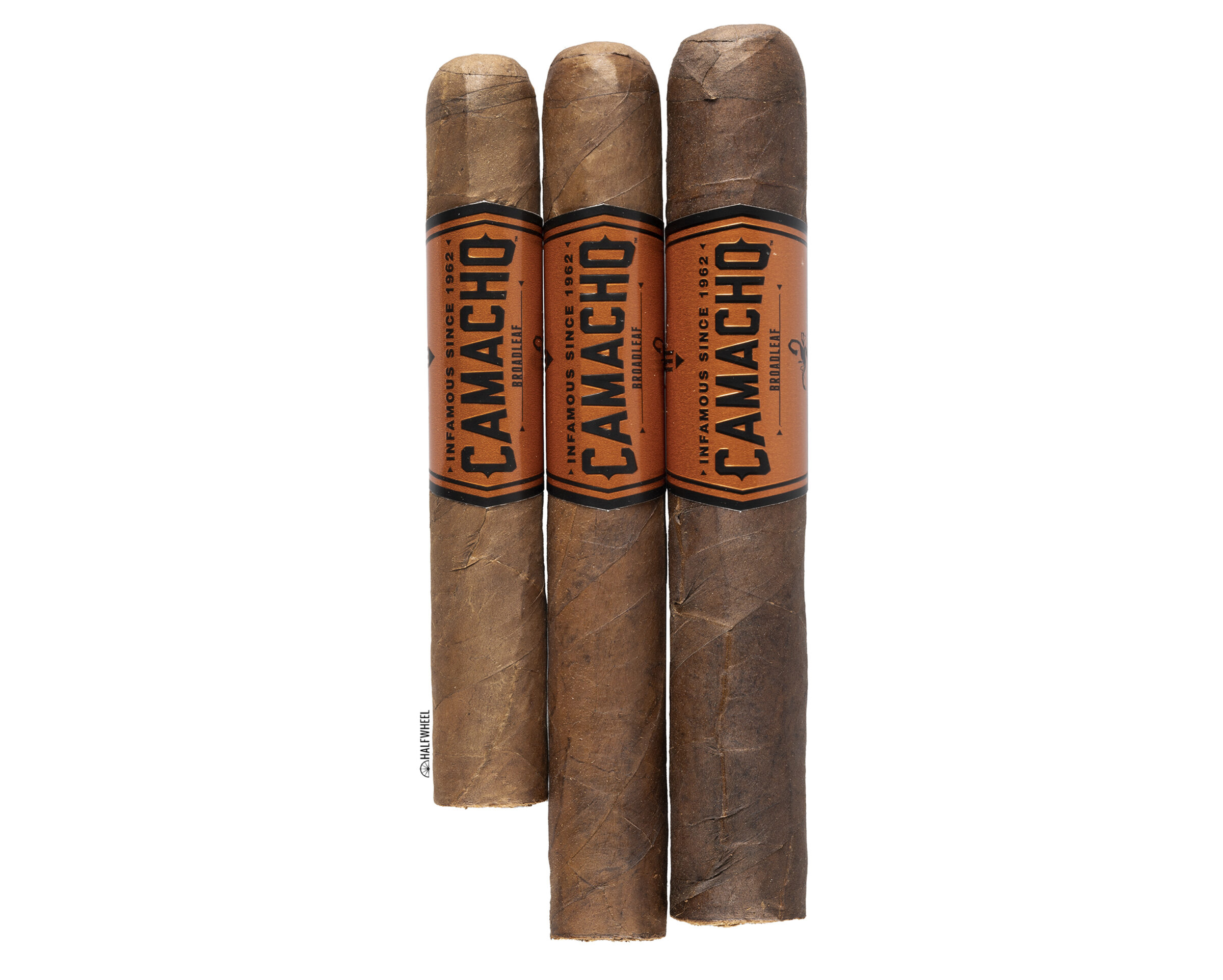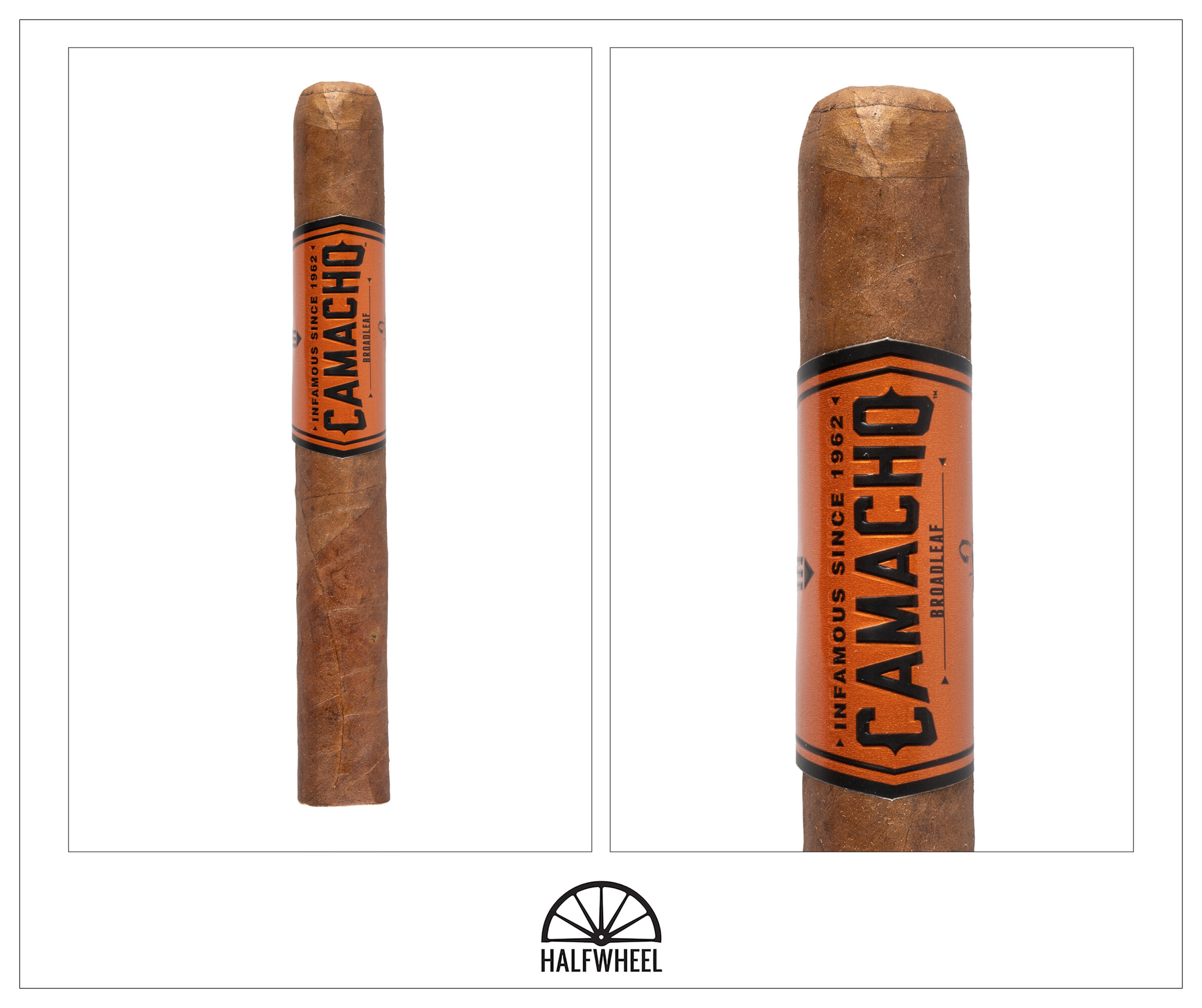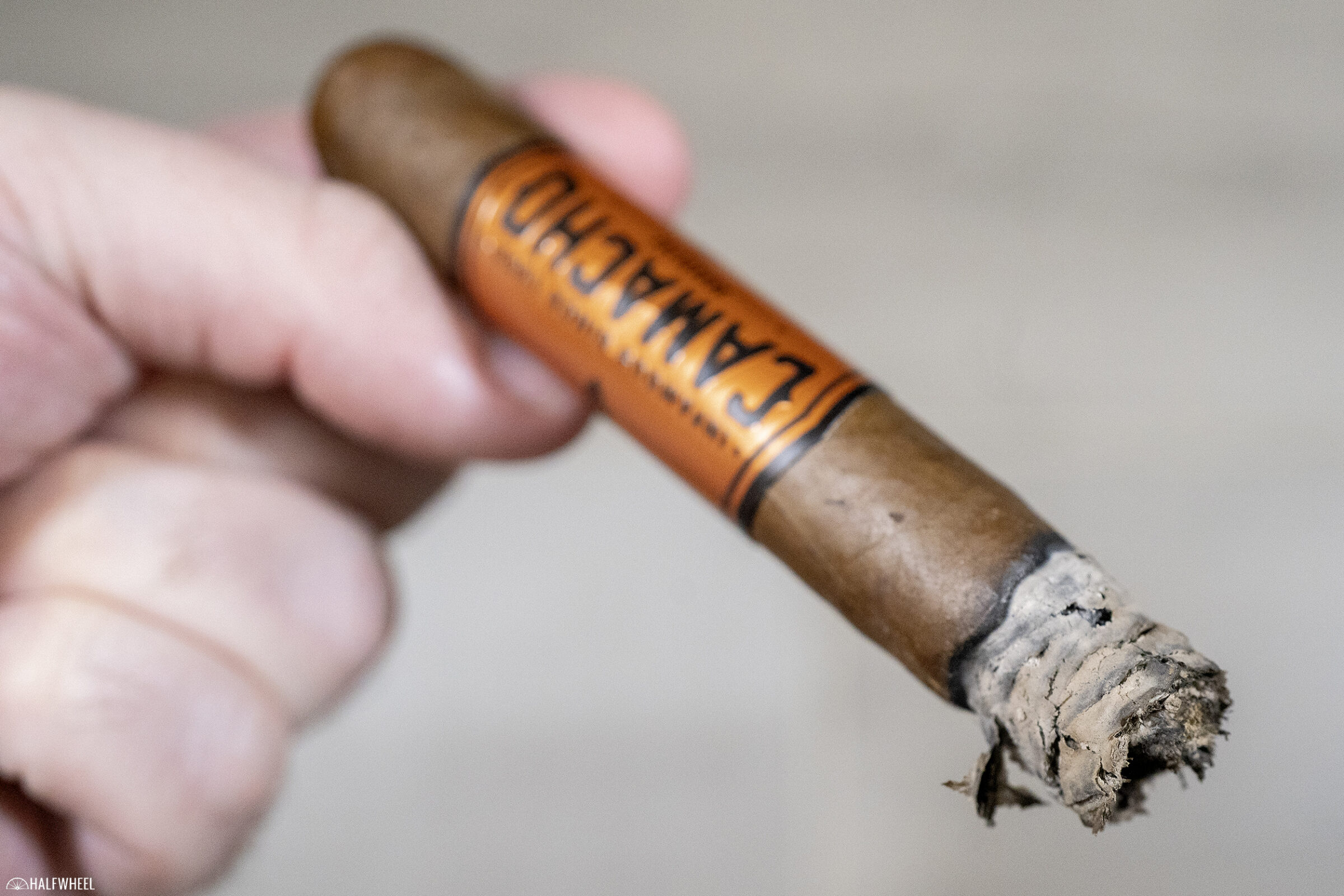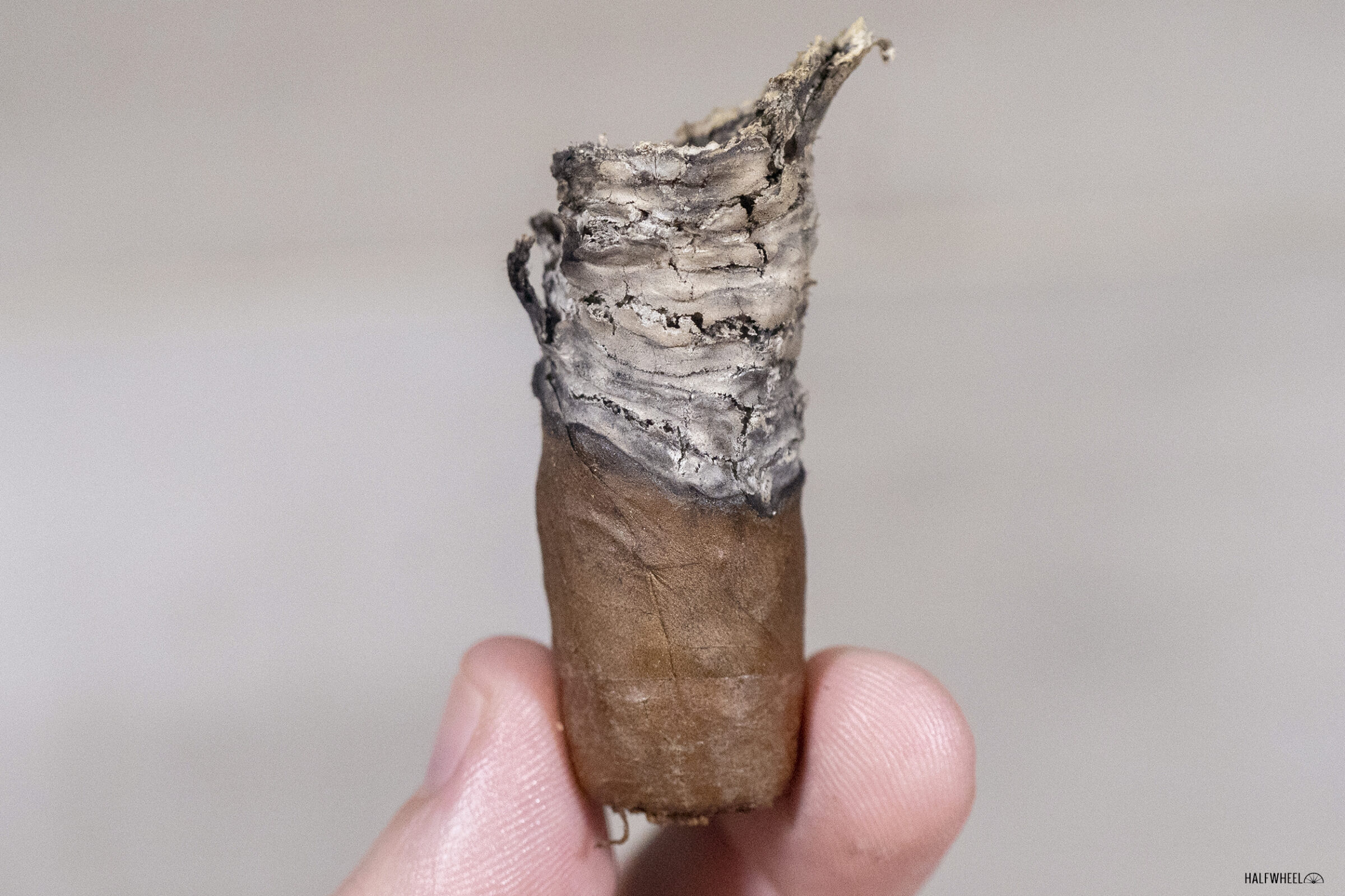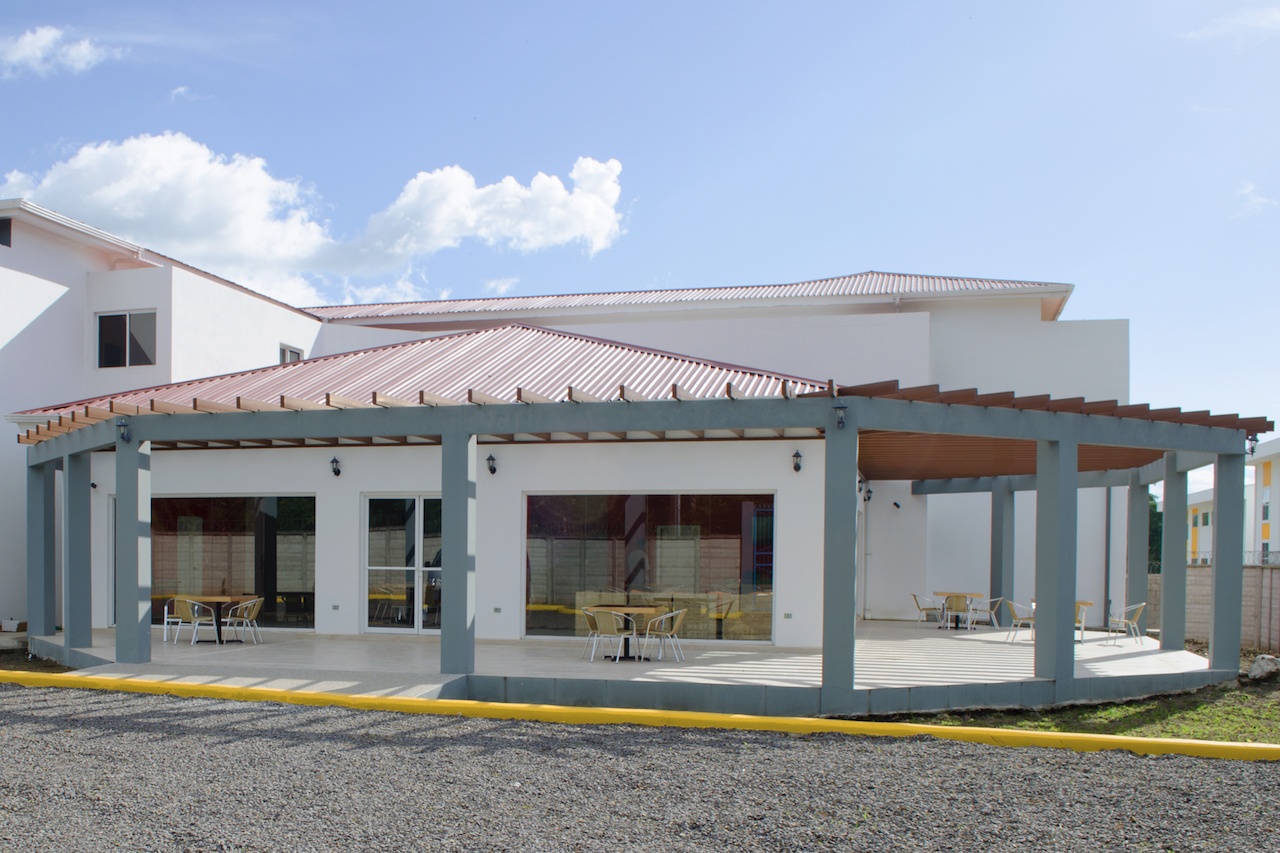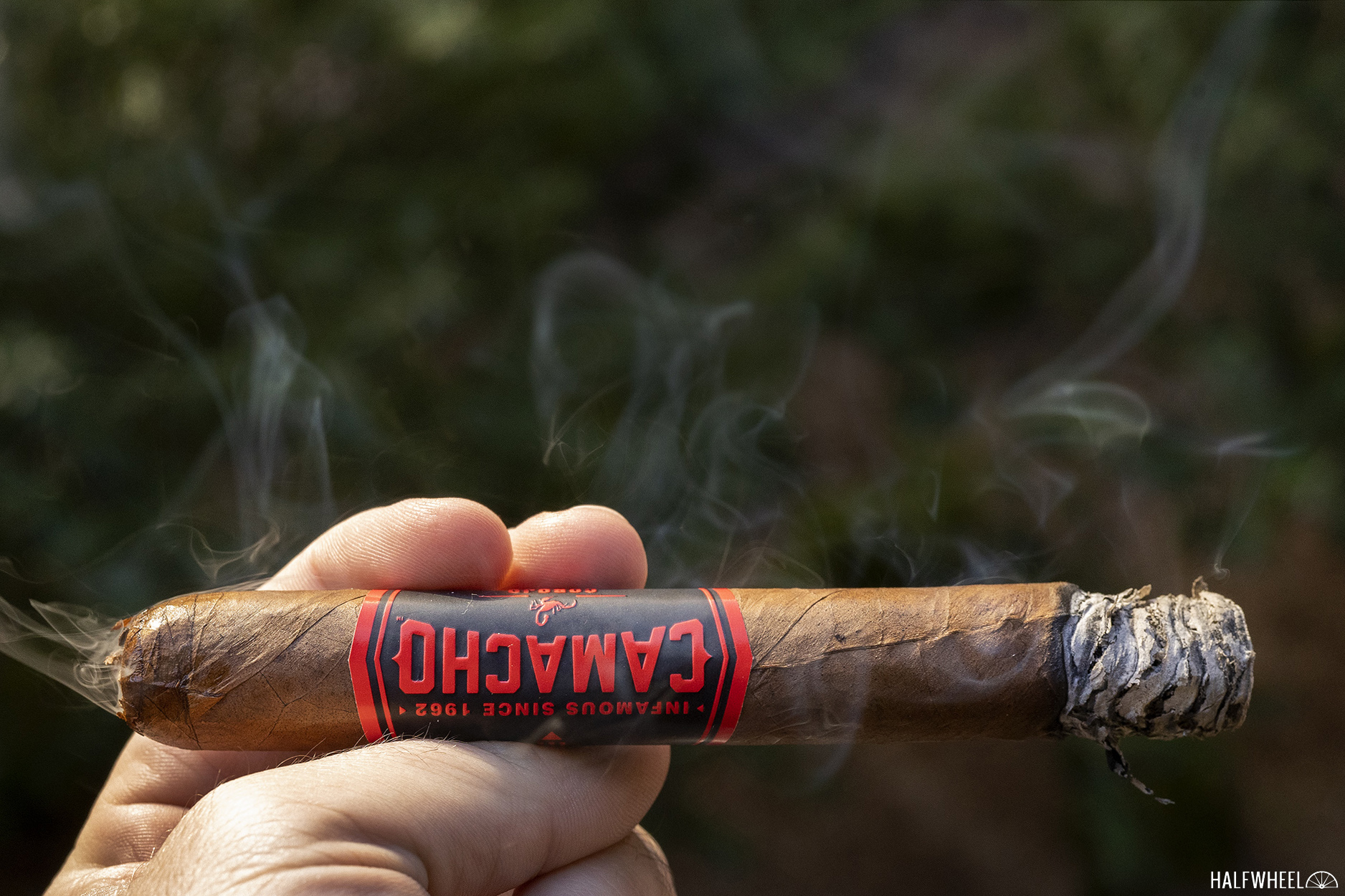If there’s one place that is most often associated with the word broadleaf, it is Connecticut, where the famed low-growing plants with large leaves are often produced. But as we have seen with Connecticut-seed tobaccos, it is not exclusive to that state, and earlier this year, Oettinger Davidoff AG’s Camacho brand added a new line that features Honduran-grown broadleaf in its blend.
The Camacho Broadleaf blend features a Honduran broadleaf wrapper, a Honduran-grown binder and a filler blend that uses Honduran and Dominican tobacco, though the varietals of the binder and filler tobaccos have not been disclosed. A press release from Oettinger Davidoff AG describes the blend as offering a medium-intensity smoke with a “rugged and unapologetic flavor profile” that is marked by dark chocolate, espresso, creamy sweetness and earthy spices, while aromas of leather and oak add to the cigar’s complexity.
The line is available in three sizes:
- Camacho Broadleaf Robusto (5 x 50) — $9.25 (Box of 20, $185)
- Camacho Broadleaf Toro (6 x 50) — $9.75 (Box of 20, $195)
- Camacho Broadleaf Gordo (6 x 60) — $10.50 (Box of 20, $210)
“I am thrilled with the amazing work our master blenders in Honduras have done,” said Edward Simon, cmo of Oettinger Davidoff, via a press release. “They created a cigar line which is not only excellent in taste, but also bold and fearless in attitude – exactly what our aficionados are searching for.”
The new line, which wears a copper-colored band and is produced by Diadema Cigars de Honduras S.A., began shipping to retailers in early September 2023.
- Cigar Reviewed: Camacho Broadleaf Toro
- Country of Origin: Honduras
- Factory: Diadema Cigars de Honduras S.A.
- Wrapper: Honduras (Broadleaf)
- Binder: Honduras
- Filler: Honduras and the Dominican Republic
- Length: 6 Inches
- Ring Gauge: 50
- Vitola: Toro
- MSRP: $9.75 (Box of 20, $195)
- Release Date: Sept. 7, 2023
- Number of Cigars Released: Regular Production
- Number of Cigars Smoked For Review: 3
The copper color of the band works great with the color of the leaf, which has some spots of mottling, some puckered veins and a bit of shine to it. The leaf isn’t overly oily, but my fingers pick up a bit of an oily gloss from it. Each cigar is rolled to a fairly firm density, though there is some appreciable variance between the three cigars used for this review. Most notable, however, is that the second cigar I smoke has a cap that isn’t completely adhered, and I can peel it off the head of the cigar with just a slight bit of resistance from the one side that is glued down properly. I still have to cut the head to get a proper opening, but this might well be the first time in my life that I have been able to just peel off the cap of a cigar as if it had just been applied. The aroma of the foot has some cold meatiness, somewhat like the combined smell of a tray of cold cuts, but there’s also peppery salami, stacked firewood, and some pepper that stands on its own. There’s also variance in the dampness of the aroma; the first has a dampness to it, while the third is rather dry, and they elicit different responses in my nostrils as a result. The cold draw is smooth and each cigar has a slightly firm draw with just a touch of resistance. There’s a bit more pepper and wood and much less meaty flavors, while occasionally mixing in just a touch of creaminess.
While there is a decent hit of dry wood, pepper and light, dry earth in the first puffs, the first thing that really catches my attention is some serious pepper through the nose on my first retrohale. Once I take that retrohale, it seems to open up the cigar in all my tasting senses, serving like a quick opening note that says the show is about to start. I’m a bit concerned about the combustion rate of the cigar, as my first couple of minutes smoking the cigar have barely moved the burn line despite some hearty draws and plenty of smoke being given off with each of them. By the quarter-inch mark, which has taken a while to get to, I get the first taste of “rugged and unapologetic” from the cigar, as black pepper hits my taste buds, wrapped in a good bit of Honduran terroir and some more generic earthiness, while touches of creaminess appear sporadically and whatever smoke gets into my nostrils offers a lingering tingle. After letting the cigar rest to jot down some notes, it takes a bit of work to get the smoke production cranked back up, leading me to wonder if some combustion issues might be in my future. There are some subtle hints of freshly squeezed orange juice that show up from time to time, and, at times, reminds me of a Sanpellegrino Aranciata, the orange-flavored sparkling water. The bolder, brasher notes dial themselves back as this section comes to a close, clearing the way for a bit more creaminess to enter the profile, though pepper still lingers as a reminder of what this cigar is capable of offering. Flavor is medium-plus with moments at full, body is medium, and strength is medium-minus. Construction is good on the whole, but as noted the burn rate is slower than I’d like and smoke production can wane.
The second third of the Camacho Broadleaf Toro starts off with a strong pepper through the nose, something that has been a trait of the cigar since early in the first third. The flavor has a bit more creaminess and a slightly lighter body than what I picked up earlier. Were I to start the cigar in the second third, “rugged and unapologetic” would not be the phrase that comes to mind and instead might be one of the furthest descriptors I could use for the profile. There is still some pepper and earthiness, both callbacks to that phrase and its prominence in the first third, but they are background flavors now. The orange flavor has faded away as well, while dry earthiness continues to lead the finish, a sensation that hangs around the top of my throat more than on my taste buds. Retrohales are where the Camacho Broadleaf Toro offers its most vibrant and engaging sensations, as the pepper remains bright and stimulating, the creaminess is a subtle accent, and the earthiness isn’t as much of a contributor. It’s certainly not the most complex profile as the burn line reaches the midpoint, but it’s got enough character to keep me engaged. There aren’t many other changes in the profile for this section, though the final puffs hint that the flavor is building, as the smoke dries out a touch and I get a bit more dry earth on my taste buds. Flavor dials back to medium in this section, though retrohales will up that to medium-plus, while the body is a solid medium and strength is medium-minus. There are no major construction issues, however, the burn line is still moving rather slowly and there are times when I need to relight the cigar after letting it rest to jot down some notes.
As hinted at in the final puffs of the second third, the final third starts with some notes of Honduran terroir driving the flavor, though the broadleaf and whatever other varietals are in the blend make this unique from other Honduran-dominant blends from companies like Oscar Valladares, JRE, CLE and others. Beyond that though, I keep coming up empty in trying to describe just what makes this blend truly unique, particularly when trying to assign credit to the Honduran broadleaf wrapper. Both the body of the smoke and the intensity of the flavor continue to build, still being driven by the earthy flavor that has been a staple of the cigar, with pepper accenting things and a fading amount of creaminess rounding things out. About halfway through this section, I begin to feel some nicotine strength setting in, or at least what I believe is nicotine strength, as it seems to dovetail with a more potent pepper that hits the back of my throat. I’m not necessarily woozy, but if I stand up and move around a bit, I certainly feel some kind of effect being imparted. This continues as the cigar burns, with the final inch getting quite rough and even harsh at times as heat and pepper combine to really irritate my throat and hit my system with nicotine strength. The cigar finishes pretty in full flavor territory, while body is medium-plus and strength is medium-plus after this recent buildup. Construction-wise, the burn rate continues to be slow but stays lit with regular puffs, while the draw is smooth, the burn line is even enough to avoid touch-ups and smoke production is fairly plentiful.
Final Notes
- I don’t know how intentional it is, but the orientation of the text on the cigar band leads to the photos you see above, which I’m not crazy about, as I would much prefer the text to be readable.
- As to why I simply don’t just hold the cigar in my right hand, doing so creates a bit more of a logistical struggle with the camera, as the shutter button is on the right side and I find myself having to contort in ways that don’t result in the best images.
- I have not seen Honduran-grown broadleaf in person, so I’m wondering how much it looks like the Connecticut-grown broadleaf I saw back in 2014 when I went to the Gershel Farm in Connecticut as part of a trip that Altadis U.S.A. arranged.
- While shade-grown Connecticut tobacco is known for being tall and producing fairly small leaves, broadleaf tobacco is almost like a bush; short, thick, with big, hearty leaves that droop down seemingly under their own weight.
- The plants I saw in Connecticut were also stalk-cut as opposed to having their leaves removed in primings, a process that led from a field transforming from being full of these plants to one where they are laying down while they await collection for transport to a curing barn.
- One cigar had a burn rate that was easily the slowest I can recall, akin to a car being stuck in the snow. I’d take some puffs, and it felt like I was spinning my wheels in making progress. That led to some frustration and concerns about just how long it would take to get to the cigar, and that was before some combustion issues kicked in to add to the experience. Nothing immediately stood out as problematic, so I’m hesitant to assign responsibility to either the tobacco or the construction.
- Just about a week after its U.S. launch, the Camacho Broadleaf was released in Germany and Switzerland on September 15.
- This cigar definitely hit me with some nicotine strength in the final third, and while not enough to warrant some white sugar to try and neutralize it, had me thinking about it. If anything, the effect is a unique combination between the robustness of the flavor and some nicotine, hitting the upper part of my chest and reaching into the top of my throat.
- Cigars for this review were purchased by halfwheel. After we purchased cigars, Davidoff sent cigars. See below.
- The cigars for this review were purchased by halfwheel.
- Final smoking time was two hours and 50 minutes on average.
- Site sponsors Atlantic Cigar Co., Corona Cigar Co., Famous Smoke Shop and JR Cigar carry the Camacho Broadleaf Toro.
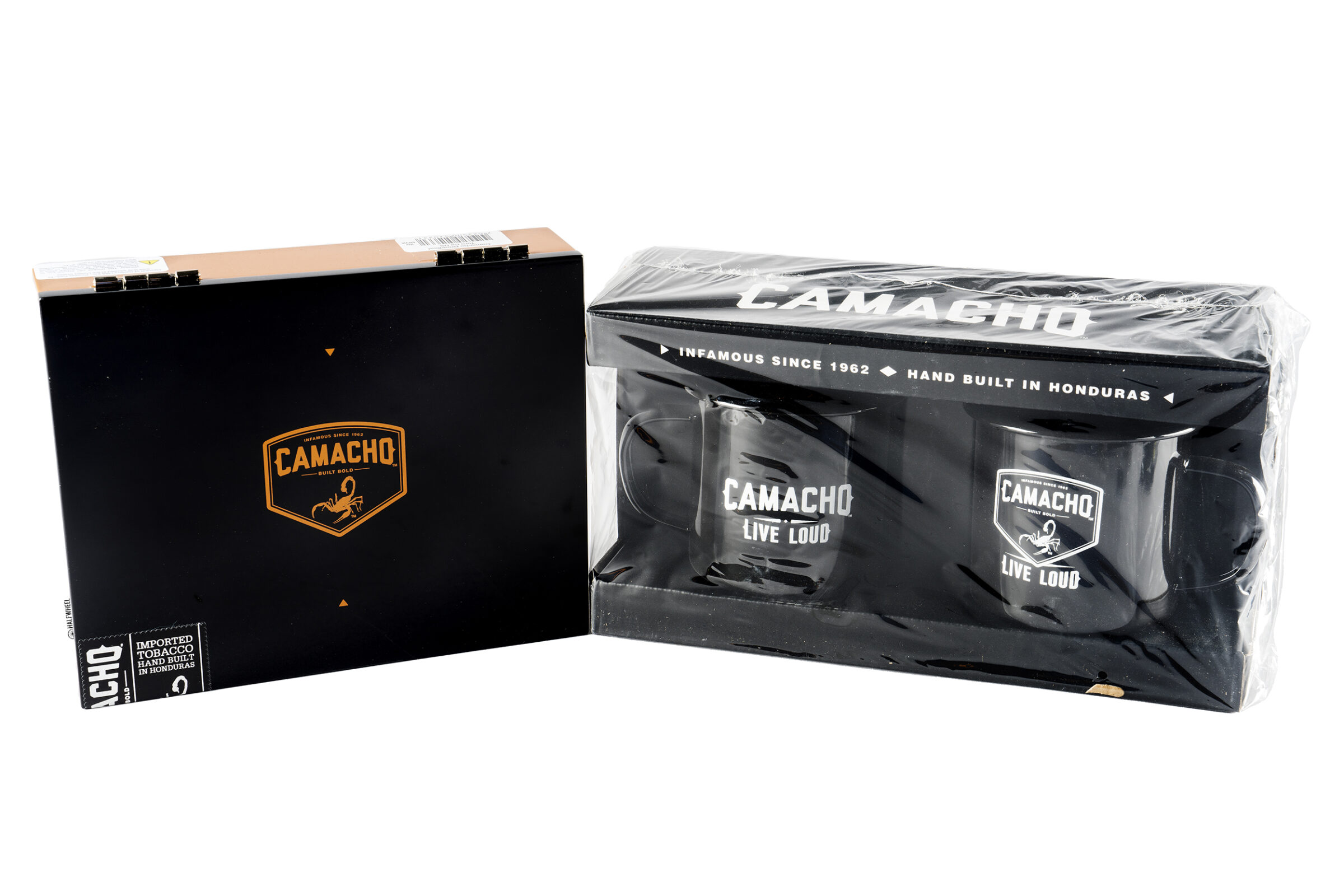
Davidoff sent us a box of cigars and some other Camacho swag, now it can be yours. Leave a comment on this post between now and Oct. 26, 2023 and you’ll be entered to win.
- Must be 21-years-old or older to enter.
- Only open to U.S. residents with a continental United States shipping address.
- Comments must be left on halfwheel.com.
- Only one comment per person will be counted as an entry.
- Prize is (1) box of Camacho Broadleaf and miscellaneous swag. Shipping to an address in the continental United States is included.
- Total value is $200.
- Contest rules are here.
Update (Oct. 27, 2023) — Random.org has deemed cyrulikk the winner.
One of the first things I do after smoking any cigar is ask myself, what did I learn and experience from this cigar? In the case of the Camacho Broadleaf Toro, it's a question for which I'm not sure I have a great answer. If the “rugged and unapologetic flavor profile” that the company says this has is what I was after, I'd feel pretty satisfied that it checked that box. But there are a lot of cigars that do that, leaving me to try and figure out just what makes this blend unique. After smoking three cigars, I'm not sure just what that uniqueness is. There is plenty of earth, terroir, and pepper, yet the Honduran terroir that I have so often praised wasn't quite here, nor was the chocolate and espresso that were in the marketing materials. In short, this hit my palate with a fairly familiar profile that worked for about two-thirds of the nearly three hour smoking time before getting a bit too harsh for my enjoyment. This is one of those cigars where I really wish I could experience the individual components, as while the Honduran broadleaf must have stood out enough on its own to warrant being used for a cigar, whatever those special characteristics are seemed to get lost in the overall blend. It's still good enough to be worth trying, I just wish I could give a more specific reason for doing so.

